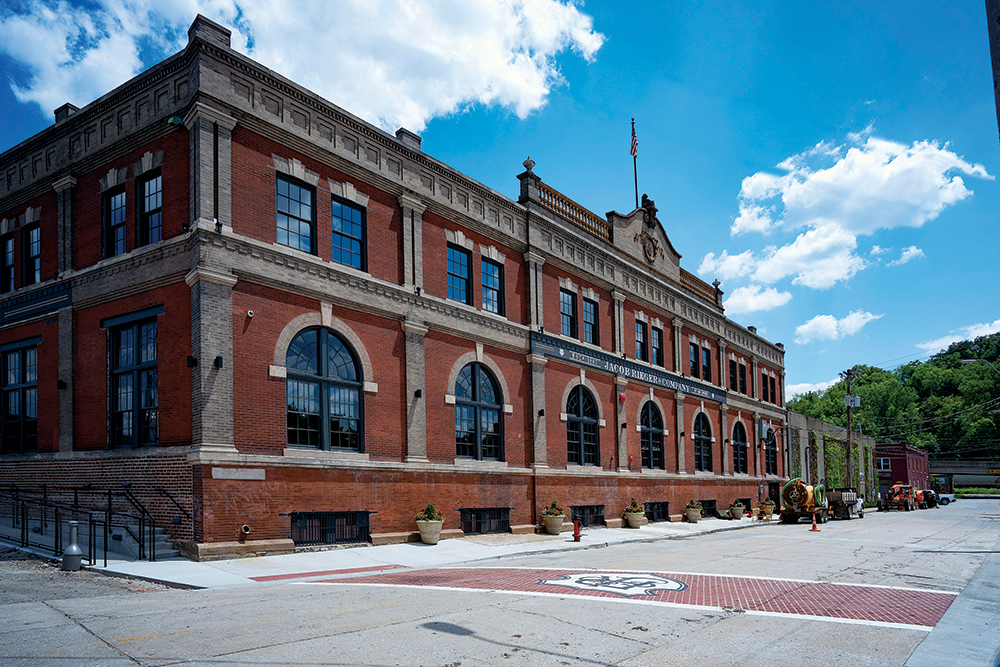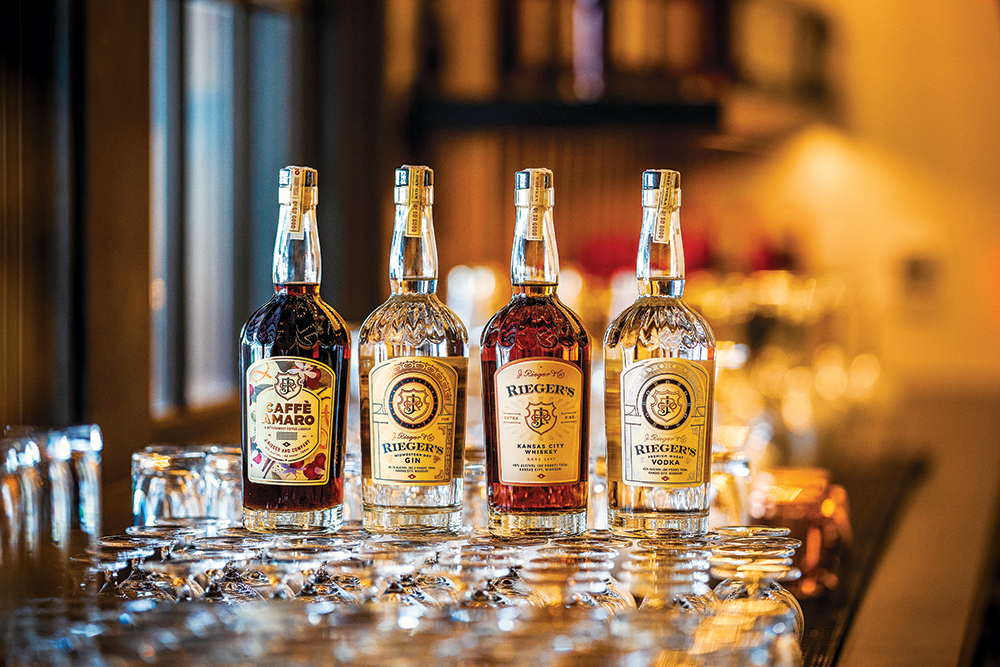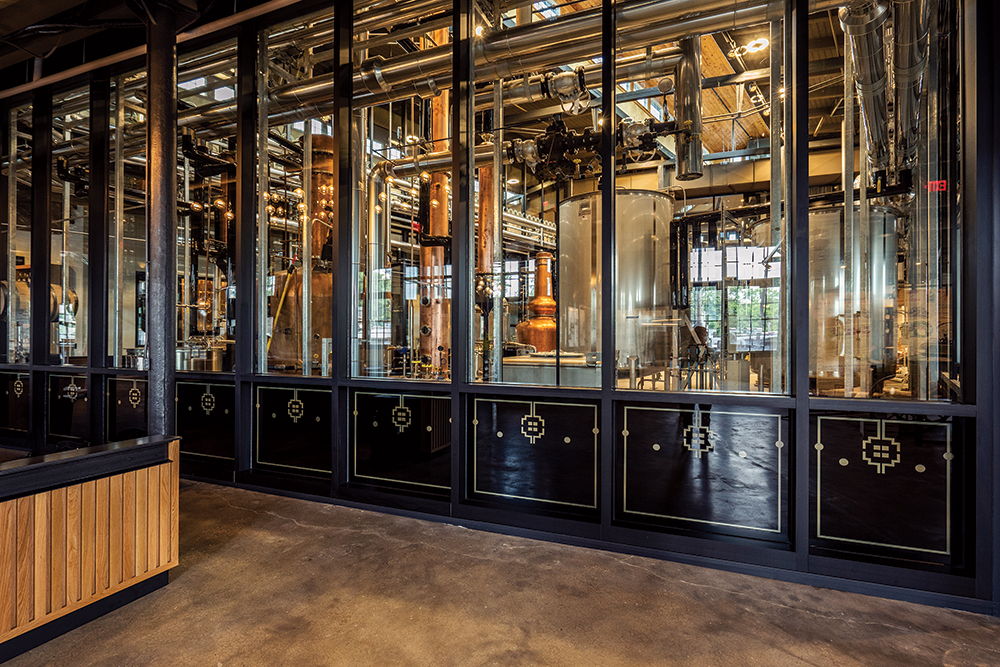Young Spirits: J. Reiger & Co.
For a Kansas City bartender-turned-distiller, two percent made all the difference.
Article by Tom Johnson; Photography by Terry Allen
In 2009, award-winning bartender and entrepreneurial ball of fire Ryan Maybee prepared to open a restaurant in Kansas City’s historic Rieger Hotel building. While researching the building’s history, he uncovered the J. Rieger Distillery, a forgotten producer that, before Prohibition, sold its whiskey mostly by mail order to customers across the rural Midwest.
With a restaurant in need of his attention, Maybee filed away the information about the distillery. Then, on the night the restaurant opened—or perhaps the night after, depending on whose memory you trust—the last living descendant of the original Rieger patriarch walked in and introduced himself.
“Ryan thought I was trying to get something for free,” Andy Rieger said with a laugh. “I went in because my dad, before he passed away, asked me to go. I was having a drink at the bar and Ryan walked up and said we should partner someday and do the distillery again, and then he walked away.”
Out of that fairly unpromising introduction, a partnership slowly grew. It resulted in the revival not just of J. Rieger, but also of the whole concept that there might be a distinct Kansas City whiskey style.
“We knew we wanted our whiskey to be cocktail-friendly from a price perspective,” Maybee said. “Unfortunately, in 2014, when we started looking around, that’s when bourbon prices started skyrocketing. We had a hard time finding bourbon we could buy at a price to get it on the shelf for 50 bucks.”
They eventually settled on a blend of American and Canadian whiskies varying in age from five to 12 years. It was almost, but not quite, just what they wanted.

Cut to the Carousel Bar of the Hotel Monteleone in New Orleans’s French Quarter. The bar is an elegantly festive clown car of a joint where a dour Maybee sat, complaining about his own whiskey to distilling consultant Dave Pickerell. Pickerell, who died in 2018, was the guardian angel of dozens of entrepreneurs like Maybee, guiding and protecting them from harm as they maneuvered the absurd complexity of creating and building new whiskey brands.
Maybee said that after Pickerell listened to his tale of woe, he took out his phone to scroll through TTB regulations, searching for anything affordable that could be done to add some pop to the whiskey. Eventually he found an obscure…well, you can’t really call it a regulation, or even a loophole. It’s more of a footnote way down deep in the chapter on coloring, flavoring, and blending materials in a paragraph so obscure even the TTB didn’t realize it was there.
“Traditionally,” the paragraph read, “to ensure consistency in color and smoothness, caramel color and blending sherry are added to blended whisky. Consequently, provided the total addition of caramel and blending sherry does not exceed 2 percent by volume of the blended whisky,” it is allowable.
“I already had a deep affinity for sherry,” Maybee said. “I was really into it for cocktails. It turns out that dating back to the mid-1800s, the use of sherry was very common. I believe it was something [Rieger] did. Discovering it has historical precedent in America, I was obsessed with doing that.”

“He gets really fired up,” said Steve Olson, the legendary consultant and drinks educator who ended up investing in the distillery. “It’s fun to watch.”
Olson took Maybee to Spain, where they visited bodega after bodega until they settled on Williams and Humbert 15-Year Solera Especial Oloroso.
“The whiskey was missing the tiniest core in the middle,” Olson said. “That sherry—just a drop—made it explode. It doesn’t taste like sherry at all. It just gives it this little gentle push in the middle.”
When Maybee introduced J. Rieger’s whiskey to federal regulators, they tried to call it a blended whiskey, a legally defined, kind-of-downscale category that can contain as little as 20 percent actual whiskey. (The rest is made up of grain-neutral spirits, flavor additives, and coloring.) Maybee contended that his mixture, which was 98-percent whiskey, didn’t belong in that company. After a fairly long argument, he prevailed.
J. Rieger launched Rieger’s Kansas City Whiskey in October 2014. Since then, Maybee has been blending for immediate sale and distilling for the future. During the COVID pandemic, J. Rieger produced over 100,000 gallons of hand sanitizer even as they continued to distill and barrel whiskey.
“We’re going to be stronger down the road,” Maybee said.
J. Rieger’s released its own 6-year-old Bottled-in-Bond Straight Rye Whiskey in August 2021. A bourbon will follow in spring 2022. Unlike many start-up distilleries, which generate cash flow with sourced blends they abandon after their own distillate is presentable, the thinking at J. Rieger is that Kansas City whiskey is too good to abandon.
“Once we have our own bourbon and rye, they easily step in and become products that are sold alongside,” Rieger said. “They complement the original whiskey. They don’t replace it.”






